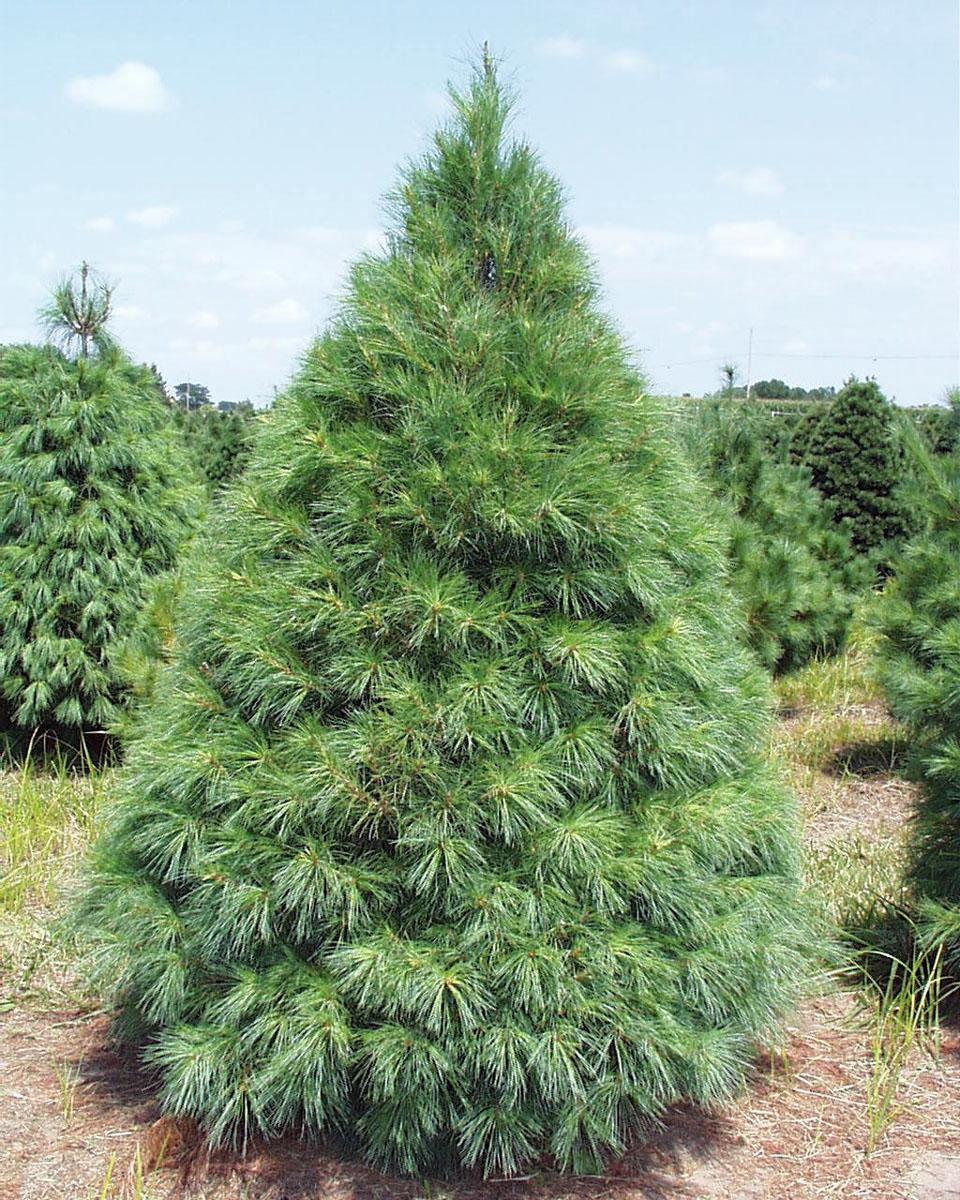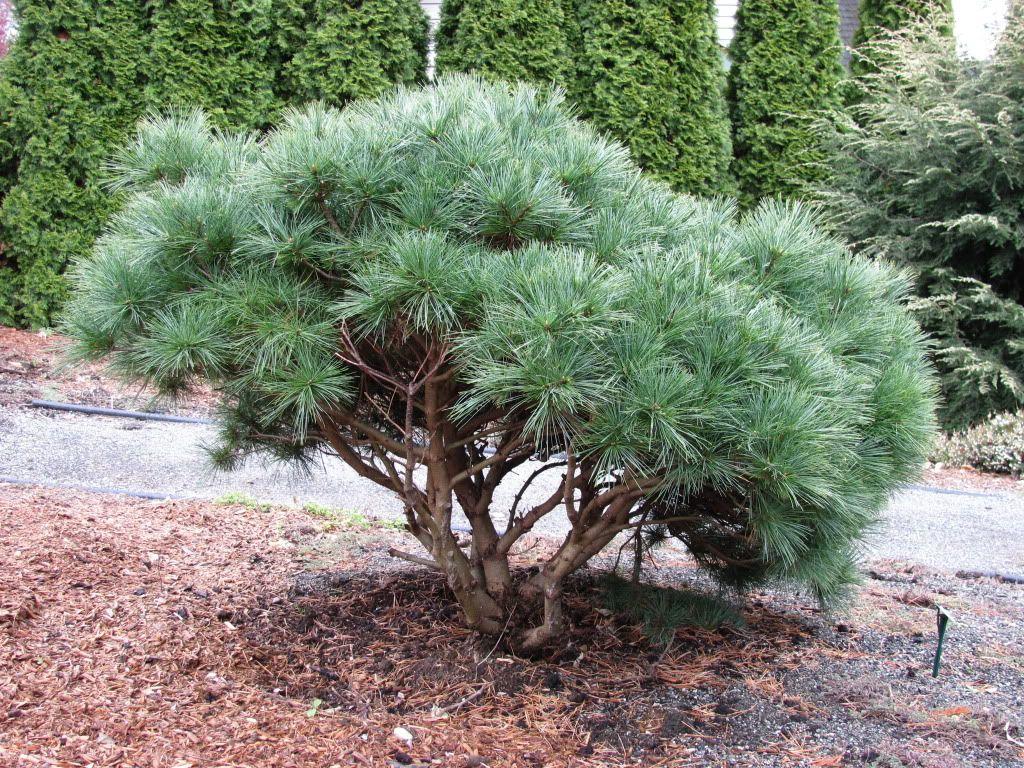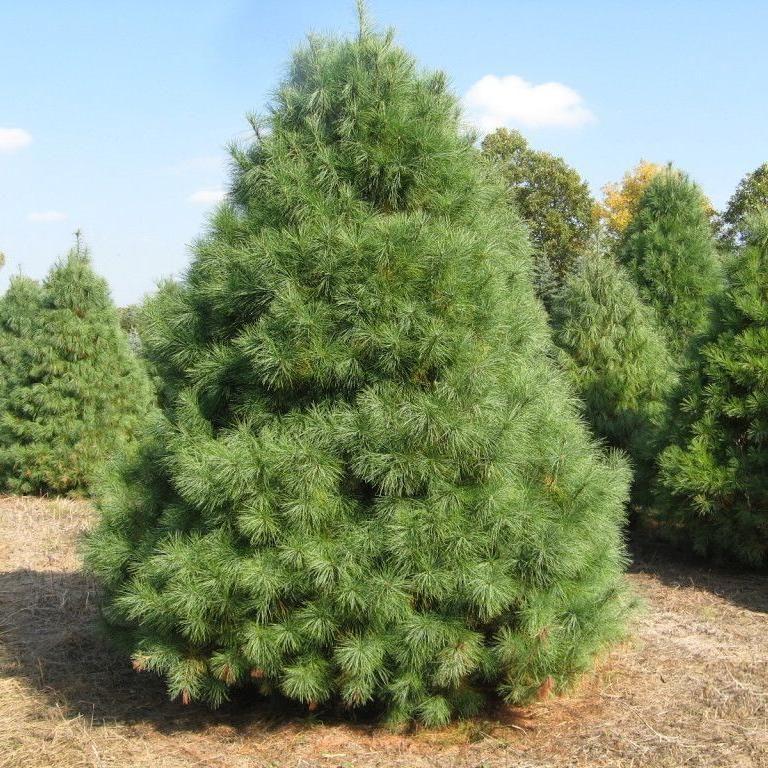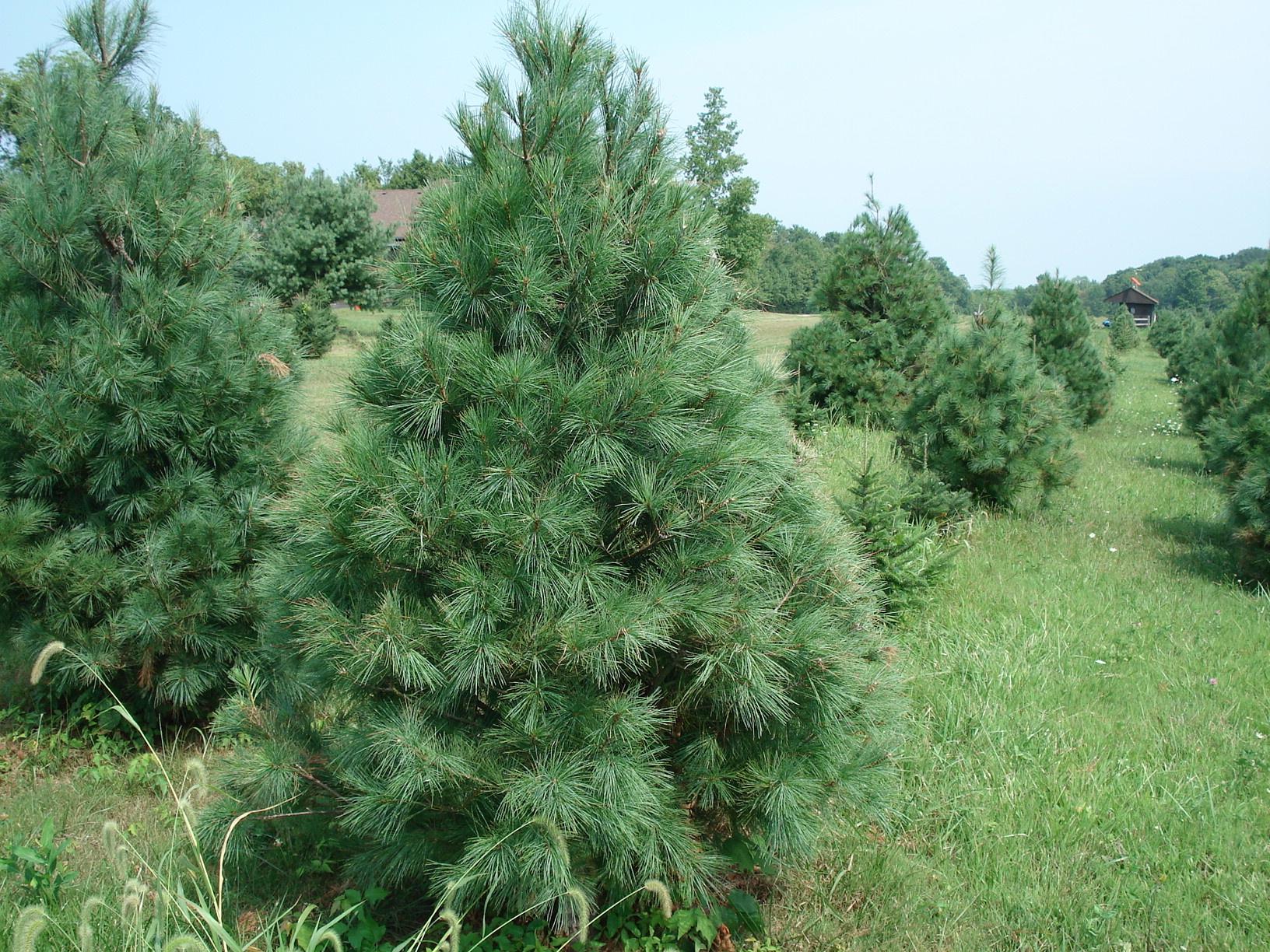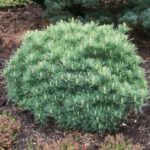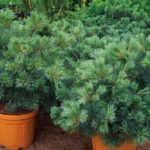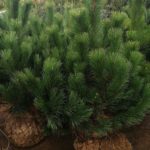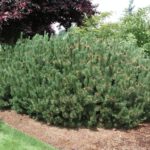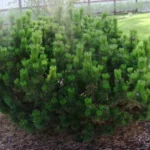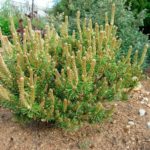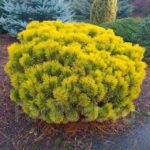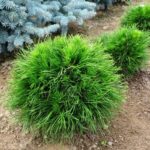Weymouth pine is a decorative crop from the Pine family. The height of the plant reaches 50-60 meters. There are also dwarf varieties, but they are quite rare. The culture has become widespread due to the ease of wood processing. In addition, it is often used in landscape design. In order for the plant to develop normally, it needs to be properly cared for.
Description of the tree
Weymouth pine is a tree that has a lush and rounded crown. North America is considered the natural habitat of the culture.It came to Europe thanks to the navigator George Weymouth. He brought this variety of wood to England in the first half of the seventeenth century. But the crop was unable to adapt to the British climate and often suffered from fungal infections.
At a young age, Weymouth pine is characterized by fairly rapid growth. During the first 30 years of life, it increases in height to 20 meters. Subsequently, crop growth slows down. A young plant has a light and smooth bark, but with age it becomes cracked and darkens.
The tree has thin branches. They are smooth or covered with fluff. The needles form buds of 5 pieces. The needles have a curved shape and reach a length of 10 centimeters. The color of the needles varies and ranges from whitish to dark green. That’s why pine is often called white.
The plant blooms from April to May. Cones ripen in the fall - a year after pollination. Then they fall off and drop their seeds with wings. The buds are ovoid in shape, brown in color and exude a resinous aroma.
This type of wood is characterized by resistance to the negative effects of external factors. Pine can withstand air pollution, temperature drops to negative values and other negative factors. On average, Weymouth pine lives for 400 years.
Common varieties
In nature, there are quite a lot of species and varieties of Weymouth pine. The most common ones include:
- Minima - this pine began to be cultivated in the mid-twentieth century. The plant belongs to the dwarf varieties and does not exceed 1 meter in height. The culture has a spherical crown, which over time becomes cushion-shaped. This pine is characterized by slow development - no more than 5-7 centimeters per year.
- Makopin - this variety grows in the form of a bush. It is characterized by long needles that form bunches. At first the cones are green in color, but after ripening they turn brown. Any soil is suitable for the plant, but it does not tolerate the active influence of the sun.
- Himmelblau - this variety has blue needles. At the same time, the tree reaches a height of 3 meters and resembles a bush in shape. Pine is considered resistant to shade, but is very demanding on the amount of moisture. The crop can be grown in a well-lit area. Only drained soil is suitable for it.
- Reinhaus is a dwarf tree that does not exceed 1.5 meters in height. It is characterized by a dense spherical crown. The culture can hardly withstand the influence of moisture. Therefore, it can be planted in well-moistened soil. This variety perfectly complements rocky and heather gardens.
- Pendula - this tree is distinguished by long shoots and a weeping crown. Sometimes it has to be grown with support. In this case, the crop grows up to 4 meters. Without support, the tree does not exceed 90-120 centimeters in height. The culture is characterized by thin bluish-green needles. It grows well on chernozems and in slightly acidic soil.
- Nana - this plant forms a shrub and grows up to 1-3 meters. The lower branches are parallel to the ground, and the upper ones are directed in different directions. The symmetrical crown reaches a diameter of 2.5 meters. The needles have a fine structure and a green color with a blue tint.
- Fastigiata – this tree is characterized by rapid growth and resembles a column in appearance. The variety is considered quite resistant to frost. It is able to withstand temperatures down to -35 degrees. In addition, the culture is considered shade-tolerant and not too demanding on lighting.It can be grown in urban environments and used to create alleys.
- Blue is an ornamental variety that is distinguished by beautiful pale blue needles. At a young age, the crown has a pyramidal shape. The plant prefers moist soil, but does not make any special lighting requirements.
- Radiata - This tree needs sufficient sun. At the same time, it is resistant to frost. The plant is characterized by a conical and spherical crown shape. This variety is often used in landscape design. The culture thrives in alkaline soil, but does not tolerate heavy soil.
Distribution area
Weymouth pine is native to America. There the tree reaches an impressive height. Today it is found in almost all states. The culture is also common on the Canadian island of Newfoundland. It is also available in a number of provinces of the country, such as Nova Scotia, Quebec, and Manitoba.
The culture came to Russia at the end of the eighteenth century. At first it was used as an exotic plant to decorate garden plots. After some time, pine became widespread in private households.
Where, when and how to plant
This soft-needled tree is often grown in garden plots. When choosing a seedling, it is important to give preference to healthy trees with richly colored needles. The plant should be placed in a lighted area with well-drained soil. When planting several trees, the interval between them should be 3 meters.
In order for Weymouth pine to easily adapt to new conditions, it is important to adhere to a number of rules:
- Make a recess. It should be 2 times the size of the root system.
- Place a drainage layer 15 centimeters thick at the bottom of the hole.It may consist of pebbles, expanded clay or crushed bricks.
- Prepare the substrate. If the site has clay soil, you need to mix turf with sand in a 2:1 ratio. For sandy soil, you need to combine turf soil with clay in a ratio of 2:1.
- Pour part of the prepared substrate into the planting hole and place the seedling in the central part. It is important to ensure that the root collar of the tree is slightly above the surface of the ground.
- Fill the hole with soil. It is important to compact each layer carefully. After this, the root collar should be flush with the surface of the earth.
- Water the plant generously.
- Cover the tree trunk circle with a mulch layer. To do this, it is permissible to use bark, wood chips or straw.
Mature trees are resistant to drought. In this case, young seedlings need to be moistened 2 times during the season. For 1 plant it is worth using up to 15 liters of water. After moistening the soil, it needs to be loosened and covered with a mulch layer.
Thanks to this, it will be possible to avoid rapid evaporation of water and protect the seedlings from temperature fluctuations. Mulch also saturates the conifer with nutrients. It may consist of cones, bark, sawdust. It is also permissible to use leaf humus and straw for this purpose.
The tree needs to be pruned in spring and autumn. In this case, it is recommended to remove diseased, damaged and dry shoots, and treat cut areas with garden varnish.Mature trees do not need to be covered for the winter, as they are highly frost-resistant. Young seedlings should be insulated with breathable material.
Reproduction instructions
Most often, pine trees with decorative needles need to be propagated by seed or by grafting. Cuttings are also possible, but this method is considered less effective. By treating the shoots with special root formation stimulants, 80% of the plants can be preserved.
Only professionals can propagate Weymouth pine by grafting. However, this is the only option for obtaining new plants from decorative varietal forms. Therefore, propagation by seeds is considered the simplest and most affordable option.
Diseases and pests
Most often, Weymouth pine suffers from blister rust. In this case, the tree trunk becomes covered with resinous white streaks. In addition, there is a risk of whole branches drying out. To cope with the problem, it is recommended to treat the wood with Bordeaux mixture 3 times. This must be done when the first orange pads with spores appear.
In addition, young pine sprouts often suffer from various fungal pathologies. Therefore, they should be systematically sprayed with Fitosporin.
Application
Weymouth pine is considered a fairly popular crop, which is often used in construction. The plant can also be used in landscape design.
In construction
The wood of this plant is characterized by a soft and uniform structure. Therefore, it can be used for making furniture and finishing work. Pine wood is used to make high-quality building materials that are easy to process.
In design
The plant is often used in landscape design.Weymouth pine can be used to create various compositions. Low-growing varieties are placed in small areas with rocky embankments. Larger varieties require more space.
Weymouth pine is a very popular coniferous crop, which has outstanding decorative properties. In order for its cultivation to produce results, it is important to follow the rules of agricultural technology.

